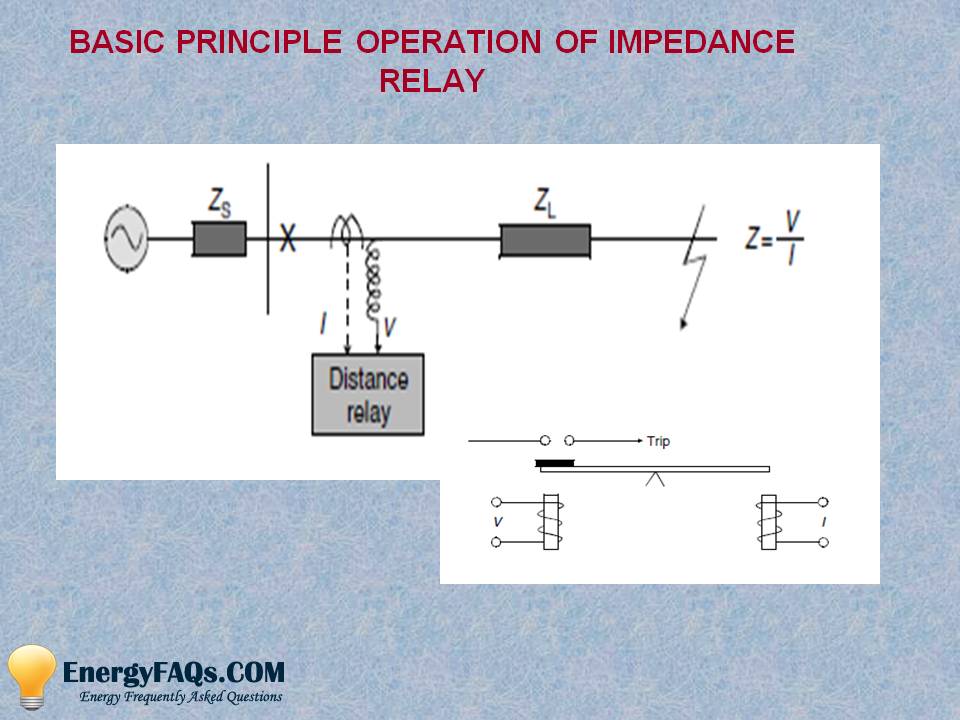DISTANCE OR IMPEDANCE PROTECTION
A distance relay, as
its name implies, has the ability to detect a fault within a pre-set distance
along a transmission line or power cable from its location.
BASIC PRINCIPLE
The basic principle of distance
protection involves the division of the voltage at the relaying point by the
measured current. The apparent impedance so calculated is compared with the
reach point impedance. If the measured impedance is less than the reach point
impedance, it is assumed that a fault exists on the line between the relay and
the reach point.
Three stepped distance protection
- Zone 1
First step of
distance protection is set to reach up to 80 to 90% of the length of the line
section. This is instantaneous protection i.e. there is no intentional delay
- Zone 2
second
zone is requires in order to provide primary protection to remaining 10 to 20% of
the line and a cover up to 50% of the next line section. The operating time of this zone is delayed so as to be
selective with zone
- Zone 3
The third
zone is provided with an intention to give full back up to adjoining line
section. It covers the line of the section, 100% of the next line section and
reaches farther into the system. The motivation behind the extended reach of
this step is to provide full back up to the next line section. Its operating time is slightly more than that
of zone 2.




Post a Comment
Post a Comment